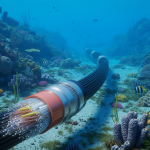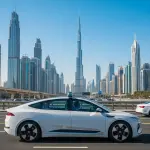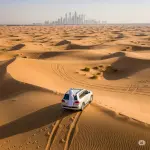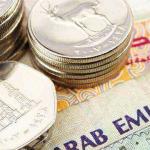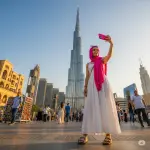Dubai, a city that seems to perpetually leap into the future, boasts a transportation history as dynamic and transformative as its skyline. From the age-old reliance on camels traversing the desert sands to the cutting-edge technology of driverless metros gliding through the urban landscape, Dubai's journey through mobility is a captivating reflection of its rapid growth and ambitious vision.
The Foundation: Traditional Mobility (Before Oil)
For centuries, the primary mode of transport across the vast, undulating terrain of what is now Dubai was the camel. These resilient "ships of the desert" were perfectly adapted to the harsh environment, carrying people, goods, and connecting nascent settlements. The pace of life was dictated by the rhythm of the caravan, and journeys were often arduous and time-consuming. The image of Bedouins on camelback remains an indelible part of the region's heritage, a stark contrast to the sleek vehicles that now dominate the roads.
Simultaneously, the traditional abra, a simple wooden boat, played a crucial role in navigating the waters of Dubai Creek. This natural harbor was the lifeblood of early Dubai, facilitating trade and connecting the two main settlements of Deira and Bur Dubai. For a small fare, people could cross the creek, and these abras remain an integral part of Dubai's identity, offering a nostalgic glimpse into its past while still serving as a vital and affordable mode of transport for many. The gentle sway of the abra, the chugging of its engine, and the bustling atmosphere around the Creek provide a sensory link to Dubai's maritime roots.
The Oil Era Transformation: Roads and Vehicles
The discovery of oil in the latter half of the 20th century marked a turning point in Dubai's history, triggering unprecedented growth and a corresponding need for modern transportation infrastructure. The automobile quickly became a symbol of progress and individual freedom. Wide roads and multi-lane highways began to crisscross the emirate, accommodating the burgeoning population and facilitating the swift movement of goods and services. This rapid expansion of the road network was a direct response to the burgeoning economy and influx of residents, though it also brought the challenge of increasing traffic congestion.
Mass Transit Revolution: Modern Public Transport
Recognizing the escalating need for sustainable and efficient mass transit solutions, Dubai embarked on ambitious projects to diversify its transportation network.
- The Dubai Bus Network: The introduction of the comprehensive Dubai Bus network provided a more affordable and accessible option for public transportation, connecting various parts of the city and catering to a wide range of commuters. The bus network has continually expanded and modernized, incorporating air-conditioned vehicles and dedicated lanes in some areas to improve efficiency and comfort.
- The Driverless Dubai Metro: A true testament to Dubai's forward-thinking approach is the Dubai Metro, an iconic and technologically advanced rapid transit system. Launched in 2009, the driverless, fully automated metro has revolutionized commuting in the city. Its two main lines, Red and Green, seamlessly connect key residential, commercial, and tourist areas, offering a fast, reliable, and comfortable mode of transport that bypasses surface traffic congestion. The sleek design of the trains and stations, coupled with their efficiency and panoramic views, has made the Dubai Metro a symbol of the city's modernity and a popular choice for residents and visitors alike.
- The Dubai Tram: Complementing the metro is the Dubai Tram, which began operations in 2014. Running along Al Sufouh Road and Jumeirah Beach Residence (JBR), the tram provides convenient access to these vibrant waterfront districts. Integrating with the metro and bus networks, the tram further enhances connectivity and offers a scenic way to navigate these bustling areas, especially useful for reaching popular attractions.
Re-embracing Waterways: Modern Water Transport
Beyond the traditional abra, Dubai has also embraced modern water transport options, leveraging its extensive coastline and the newly developed Dubai Water Canal.
- Water Bus and Water Taxi: Services like the Water Bus and Water Taxi offer alternative and scenic ways to travel along the Dubai Creek and the Dubai Water Canal. These options cater to both commuters seeking to avoid road traffic and tourists looking for a unique perspective of the city's waterways and landmarks. The serene journeys provide a refreshing contrast to land-based travel.
The Future is Now: Smart and Sustainable Mobility
Looking relentlessly towards the future, Dubai continues to innovate in the realm of transportation, actively exploring and implementing smart mobility solutions.
- Autonomous Vehicles: The Roads and Transport Authority (RTA) is at the forefront of integrating autonomous vehicles into the public transportation network. Trials of self-driving buses and taxis are underway, signaling a potential shift towards a future where transportation is even more efficient, safe, and environmentally friendly, with a long-term goal of making 25% of all trips autonomous by 2030.
- Sustainable Transport Initiatives: Furthermore, Dubai is making significant investments in sustainable transportation options. The promotion of cycling and walking is evident in the continuous development of dedicated pathways and pedestrian-friendly zones across the city. Efforts are also being made to encourage the adoption of electric vehicles (EVs) through the provision of robust charging infrastructure and incentives. These initiatives align with Dubai's broader environmental goals to reduce carbon emissions and promote greener living.
- Hyperloop and Sky Pods: While still in the conceptual or testing phases, Dubai has shown significant interest in futuristic transport systems like Hyperloop technology and Sky Pods, demonstrating its ambition to remain a global leader in innovative mobility solutions.
Conclusion
Dubai's journey through mobility is a remarkable tale of adaptation, foresight, and ambition. From the humble camel enduring the desert heat to the sophisticated driverless metro zipping through the urban core, each stage reflects the city's dynamic response to its evolving needs and its unwavering commitment to progress. As Dubai continues to grow and embrace technological advancements, its transportation network will undoubtedly continue to evolve, setting new benchmarks for urban mobility in the 21st century and beyond. The story of how Dubai moves is intrinsically linked to the story of its remarkable rise on the global stage, demonstrating a relentless pursuit of efficiency, convenience, and a futuristic vision for all its inhabitants and visitors.





